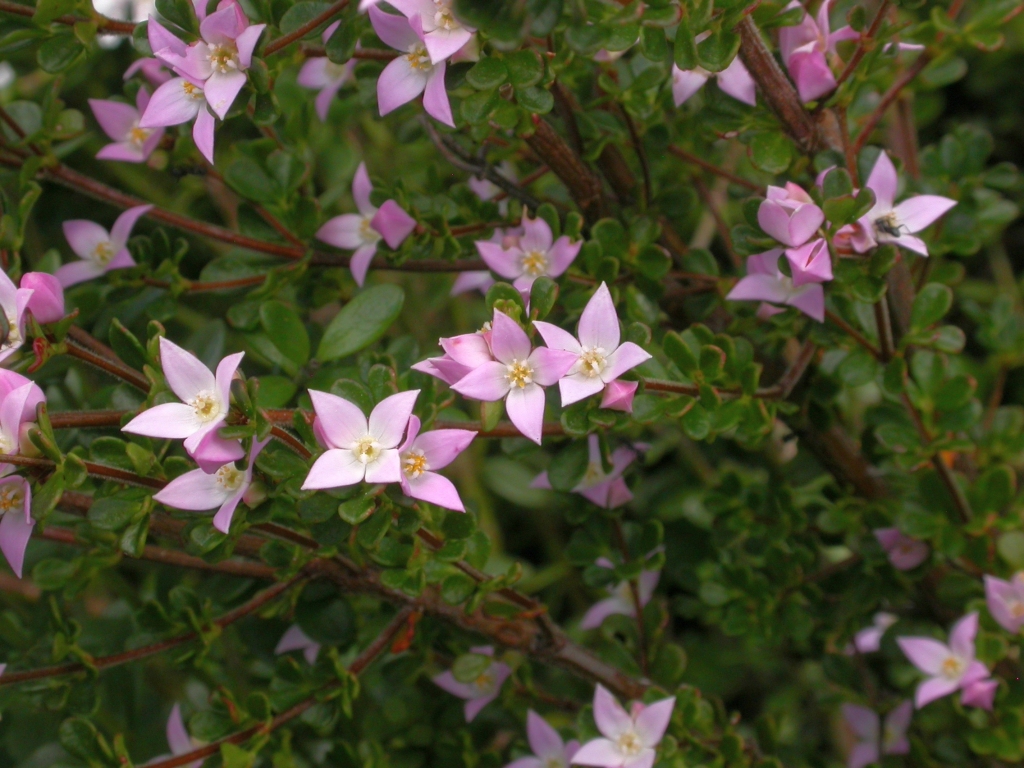Usually a spreading shrub to c. 60 cm high, less often erect to 1 m high, glabrous to moderately simple hairy throughout; branches obviously glandular, often dichotomous. Leaves pinnate with (3–)5–9 leaflets, 8–15 mm long, 4–5 mm wide; leaflets obovate, 2–9 mm long, 1–4.5 mm wide, obtuse to obcordate, margins flat, entire, midrib not raised abaxially, terminal leaflets shortest; petiole 0.5–1 mm long. Inflorescence terminal, 1(–3)-flowered; peduncle usually absent; pedicel 0.5–5 mm long. Sepals broadly ovate-deltoid, imbricate, ciliate, 1–2.5 mm long; petals pink or white, valvate, midrib not raised abaxially, 4–7 mm long, glabrous, 2.5–3 mm wide, persistent; staminal filaments glabrous; style glabrous, stigma globular, often concealing style. Follicles 2.5–3 mm long; seed 2–2.5 mm long, grey to black, dull, smooth. Flowers mostly Nov.–Feb.
NIS, EGU, HSF, HNF, VAlp. Also NSW, ACT. In Victoria recorded from Mt Buffalo, Mt Hotham, Nunniong Plateau and nearby areas, mostly on shallow soils derived from igneous parent rock, occurring in heath or open eucalypt woodland communities.



